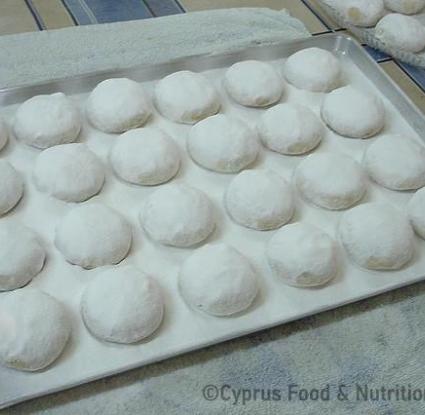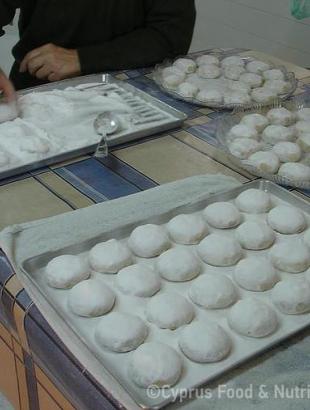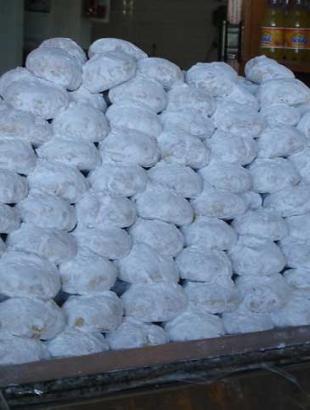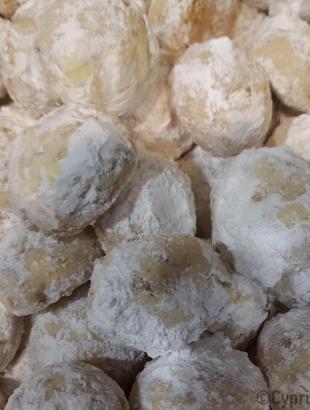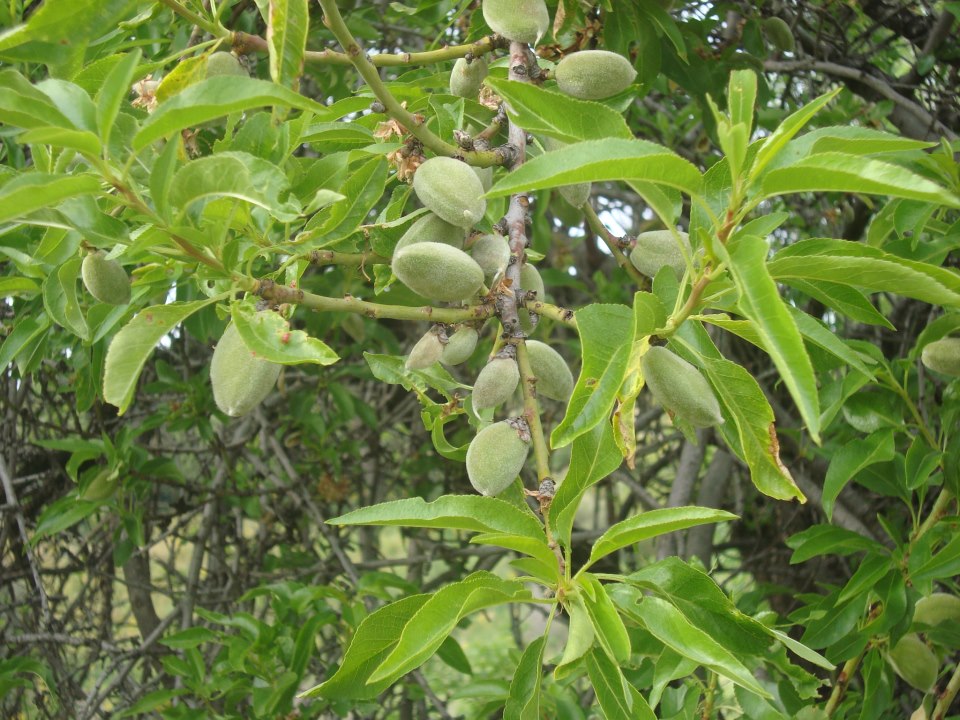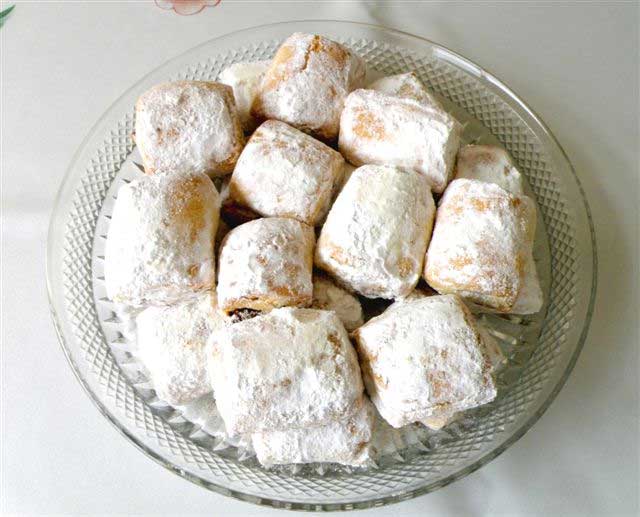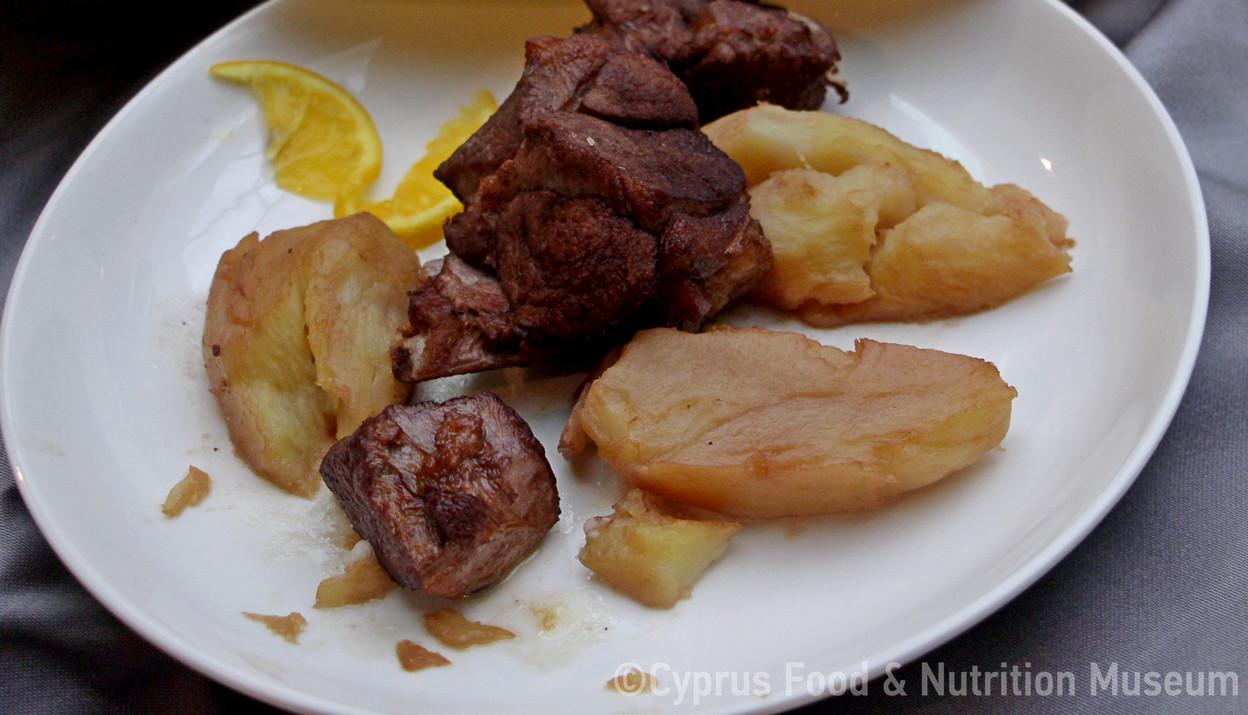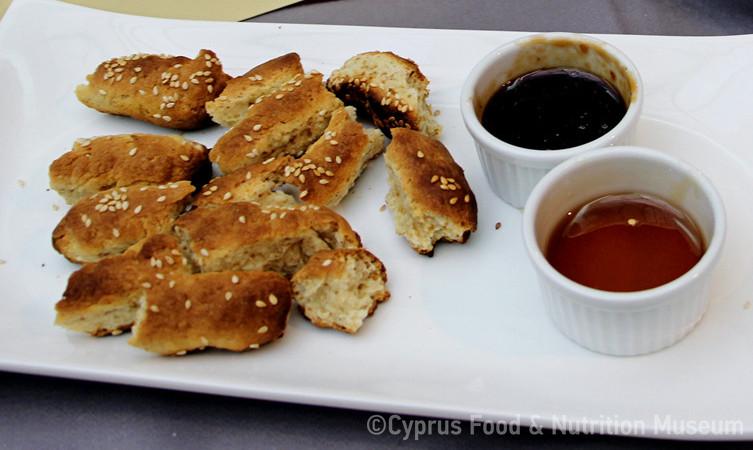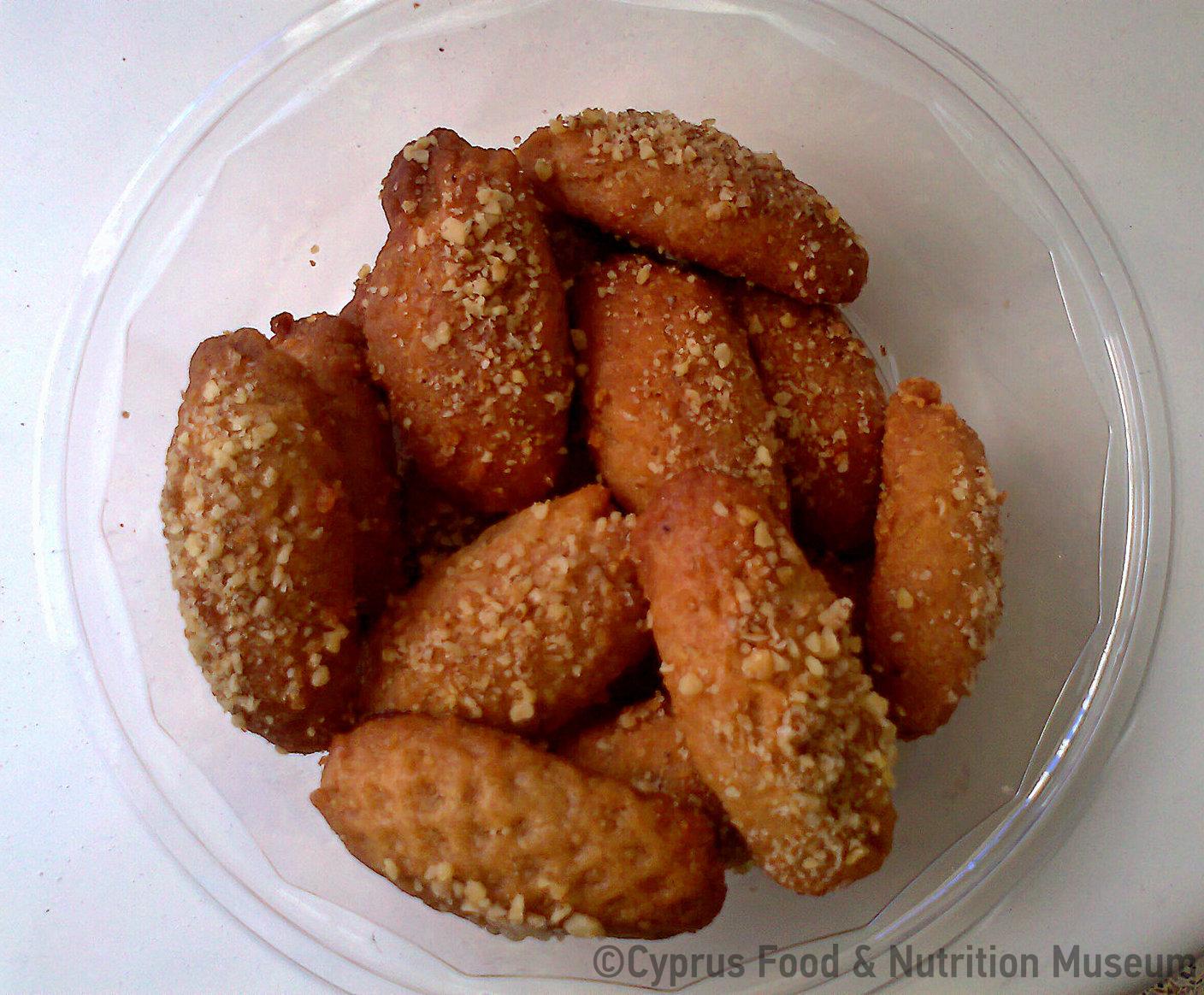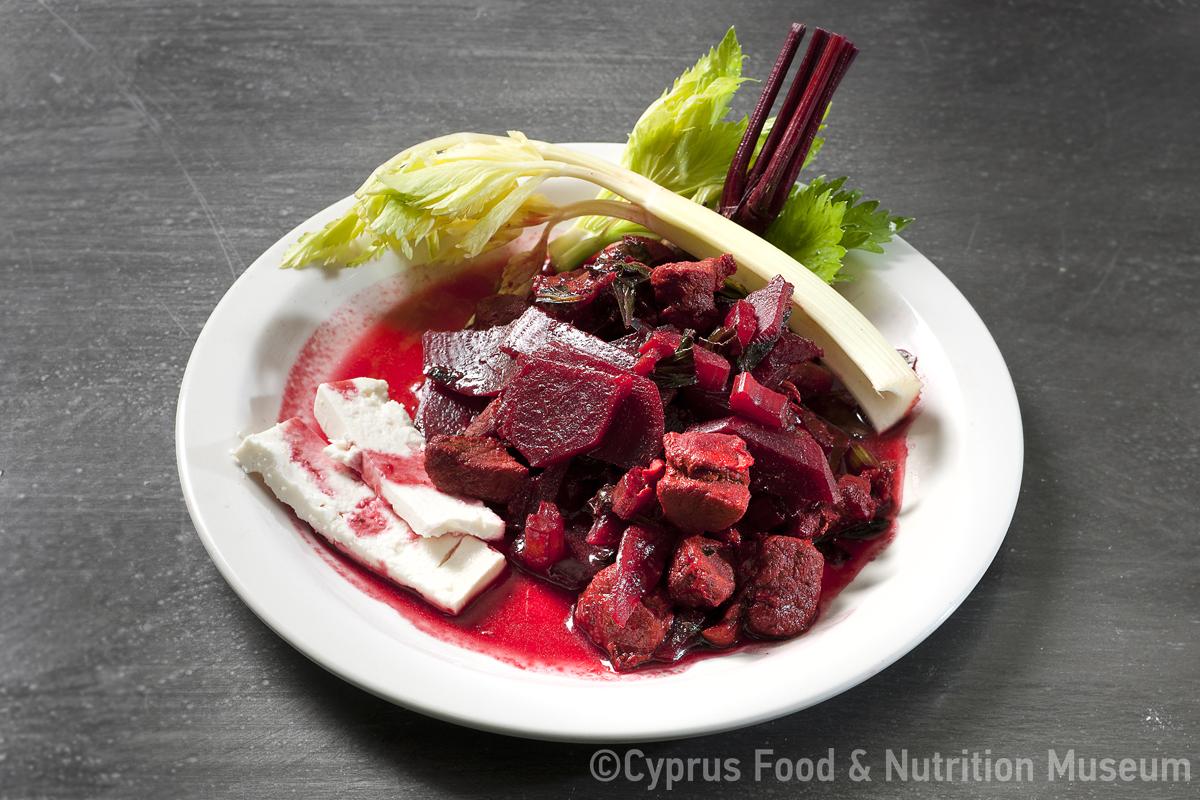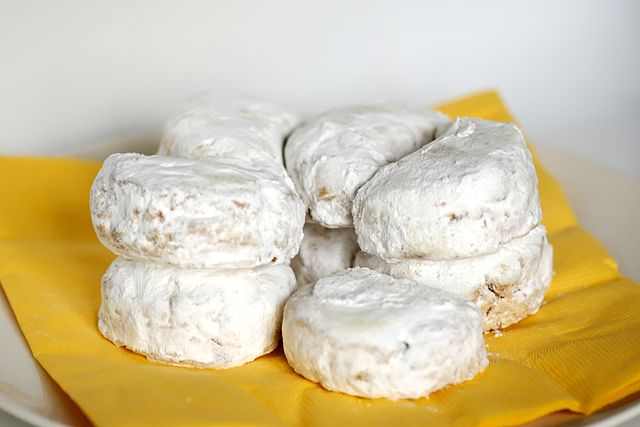A Christmas almond butter biscuit, which used to be offered to wedding guests. The dough for kourabiedes consists of flour, roasted almonds, sugar and various spices, such as cinnamon.
Name - Origin
Κουραμπιέδες από την κοινότητα Αθηαίνου
Kourabies is a sweet made from semolina and butter and sprinkled with icing sugar (Babiniotis 2005, entry κουραμπιές,ο, 945). In the past, it used to be offered as a treat at weddings, while, nowadays, it is customary at Christmas.
ETYM. kourabies < turk. kurabiye (Petrou-Poeitou 2013, entry Κουραμπιές, 69; (Babiniotis 2005, entry κουραμπιές,ο, 945) < Arab. gurāb (Babiniotis 2005, entry κουραμπιές,ο, 945)
Kourabiedes are also known as loukoúmia tou gámou.
Baking in the oven.Sprinkled with icing sugar.
Functional and symbolic role
Kourabiedes were offered as a treat at weddings.
In earlier times, up to the mid-20th century, the couple was not greeted on Sunday; the wedding ceremony would be completed at night and people would congratulate the newlyweds on Monday and give them their gifts. The wedding treats offered, depending on each village, were spoon sweets and drinks, accompanied by almonds, walnuts, peanuts, raisins, salted figs, zízifa, trimíthkia, koudamé, soutzŏúkko, fig pie, small sugar cookies made especially for the wedding and others.
Gradually, along with the traditional treats, koufetes and loukoumia of Geroskipou were also served. In the mid-20th century, a common treat was kourabiedes, which were made in the bride's house, or pastítsĭn with an almond koufetta, which were bought from the confectionery shop (Protopapa 2005, vol. B, 197, 199-200).
Additional information and bibliography
"I am referring to a very nice wedding treat, which has recently started to be accepted by young couples, offering it to their guests on the most beautiful and happiest day of their lives. It is a very nice, traditional and pure treat that won me over, I am eating it with pleasure. This treat or sweet is made of genuine flour dough, enriched with roasted almonds and ofcourse sugar. The flour dough is not laden with excess fats or buttersthat would make you disgusted. And it has the appropriate "smells", spices like cinnamon and others in very even amounts. It is indeed a nice treat that makes you enjoy eating it, without thinking you've consumed a bunch of butter, which the other types of treats have. It is possible to store them for some time. They are even lower in cost compared to other wedding treats, which can be twice the cost or more. Unfortunately, most couples today, choose to offer the well-known "loukoumia" or "mamoulia" or whatever they call them at their weddings; these are sweets containing a mud-like filling made solely from pistachios or from a combination with almonds. Their dough is full of various types of butter and fats that sometimes make you sick. Most of the time, I don't eat these, mainly because of the muddy filling as well. Young couples insist on offering these ones because of their high price tag, so that they can tell others what an expensive treat they offered at their wedding. But I, and I believe many others, prefer the traditional-style kourabiedes or the ones from Athienou as a treat at weddings. " (Testimony of Adamos Kombou, newspaper "Phileleftheros", Sun, 27 Sep 2009)
Babiniotis G. (2005), Λεξικό της Νέας Ελληνικής Γλώσσας. Με σχόλια για τη σωστή χρήση των λέξεων. Ερμηνευτικό, Ορθογραφικό, Ετυμολογικό, Συνωνύμων-Αντιθέτων, Κυρίων Ονομάτων, Επιστημονικών Όρων, Ακρωνυμίων, Centre for Lexicology, Athens, Greece.
Petrou-Poeitou E. (2013), Από πού κρατάει η σκούφια τους. Λέξεις και ιστορίες από τον κόσμο της γεύσης, Epiphaniou Publications, Nicosia.
Protopapa K. (2005), Έθιμα του παραδοσιακού γάμου στην Κύπρο, τ. Α΄- Β΄. Publications of the Centre for Scientific Research, XLV, Nicosia.
Phileleftheros newspaper, 27 Sep 2009.
Demetra Zannettou, Tonia Ioakim, Stalo Lazarou, Petroula Hadjittofi, Argyro Xenophontos

